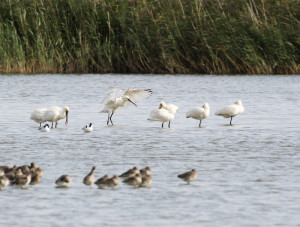
When I am in UK one of my favourite places to go birding is Kent Wildlife Trust‘s Oare Marshes reserve. It is one of those places that is always pleasant to go birding because it is a nice place to be and has the benefit of seemingly always having large numbers of birds of a wide variety to see no matter what time of year one visits. There is a nice loop to walk around much of the reserve but on recent visits I have found that just by standing at the main watchpoint on the access road a lot of good birds can be seen and as well as a lot of photographing opportunities presenting themselves.
I am not much into twitching but in going to Oare to look for an American Golden Plover, that had been seen over the preceding week, I knew that if I did not see it I would see a lot of interesting birds besides. Spending several hours at the watch point meant that I not only saw the Anerican Golden Plover but also a group of Eurasian Spoonbills and many other interesting bird. The following is a series of photos taken over the course of around 4 hours at Oare Marshes.
There are always plenty of birds to see on the east flood and on this visit the first notable species I spotted were Common Snipe, lots of them resting in grasses on the water’s edge.
After some time most of these Snipe fluttered a short distance into the shallow water to begin feeding as well as deisplaying some interesting behaviour.
Finding the American Golden Plover seemed to be a question of scanning through flocks of European Golden Plover, the only problem being that the only flocks present consisted of Black-tailed Godwit and Common Redshank. However, this was where standing and waiting paid of as small groups of Golden Plover arrived from the mudflats onto the flood to roost.
As time passed the small groups became progressively bigger but scanning through the birds did not reveal the anticipated target although a few moulting birds teased both myself and some other birders into trying to turn them into American Golden Plovers; the only problem being that they were completely the wrong colour! Amazing what your brain will do to you when anticipating a rarity.
As groups of Golden Plovers arrived I scanned through to see if there was anything different among them and as one group landed it took me only a few seconds to pick out a much greyer bird; an American Golden Plover!
This bird was only the fourth American Golden Plover I have ever seen so it was nice to be able to watch it for some time and study the plumage including the grey underwings. The fact that it had a bright white supercilium, greyish plumage and a smaller size really set it apart from the European Golden Plovers it was associating with. Having recently read the excellent Tundra Plovers: The Grey Plover & Eurasian, American and Pacific Golden Plovers, I was really interested to see both Eurasian and American Golden Plovers together.
As other shorebirds came in to join these flocks a Little Stint and a Curlew Sandpiper arrived alongside small flocks of Dunlin and Avocet numbers increased to around 50 or more. A few Ruff also provided a distraction.
When I am birding it is always nice to see rare birds but I also don’t neglect the commoner species, particularly in terms of getting nice photos. While standing at the watch point I managed to get quite nice shots of Common Starling and Long-tailed Tit that arrived in front of me.
Watching the groups of waders and other waterbirds come and go is always nice at Oare Marshes and over the course of the afternoon there were lots of other species including a Mediterranean Gull, several Common Gulls, good numbers of Common Teal and Northern Lapwing as well as a Lesser Black-backed Gull which looked rather odd nestled in among a flock of Red Knot.
A huge commotion ensued as a Northern Hobby flew over resulting in some amazing scenes of large shorebird flocks on flight although it also meant that the American Golden Plover departed.
A flock of Eurasian Spoonbills had been seen in the area and while some people went off in search of them I stayed where I was an eventually was rewarded when a flock of sixteen of these beautiful birds arrived in the flood in front of me. I have seen plenty of these birds in China, South Korea and Kazakhstan over the last twelve months but it does not detract from seeing them again; I think if one grows tired of seeing birds as spectacular as Spoonbills then there is something wrong!
Oare Marshes proved once again that it is a great place to watch birds and this was just one of many enjoyable visits I have had over the last few months and I am sure to be visiting again soon. It is also a good place to meet other birders and I was able to share my experience and learn from that of others while spending several hours at Oare.
If you want to visit Oare Marshes for yourself then information on the seasonality of birds and how to get there are on the Kent Wildlife Trust’s website – Oare Marshes.


 October 6th, 2019
October 6th, 2019  Nick
Nick 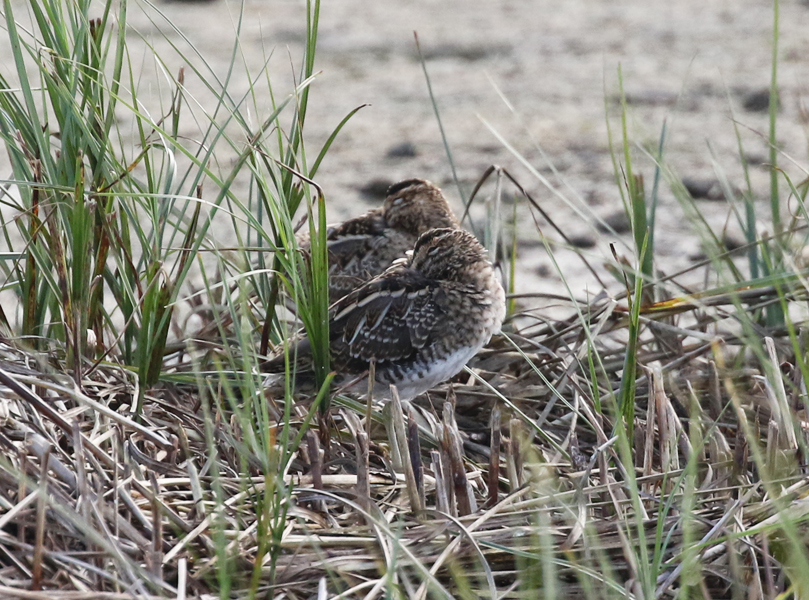
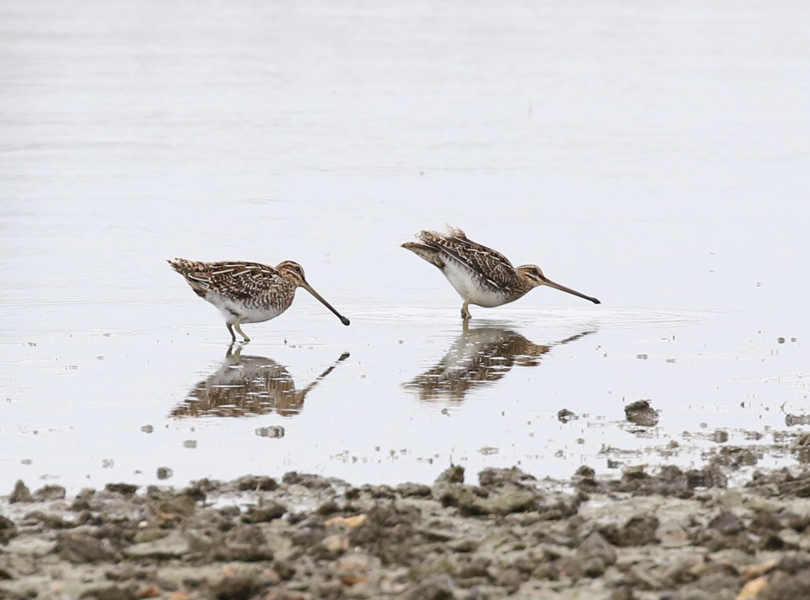
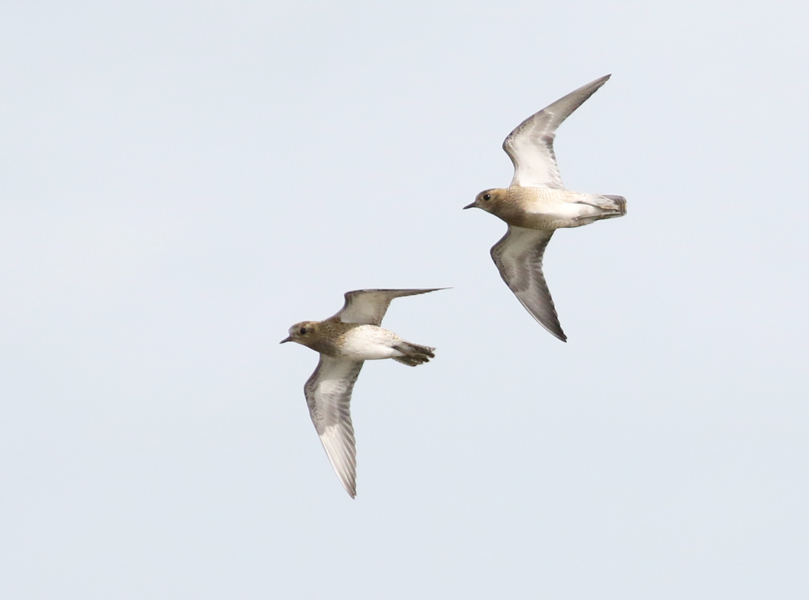
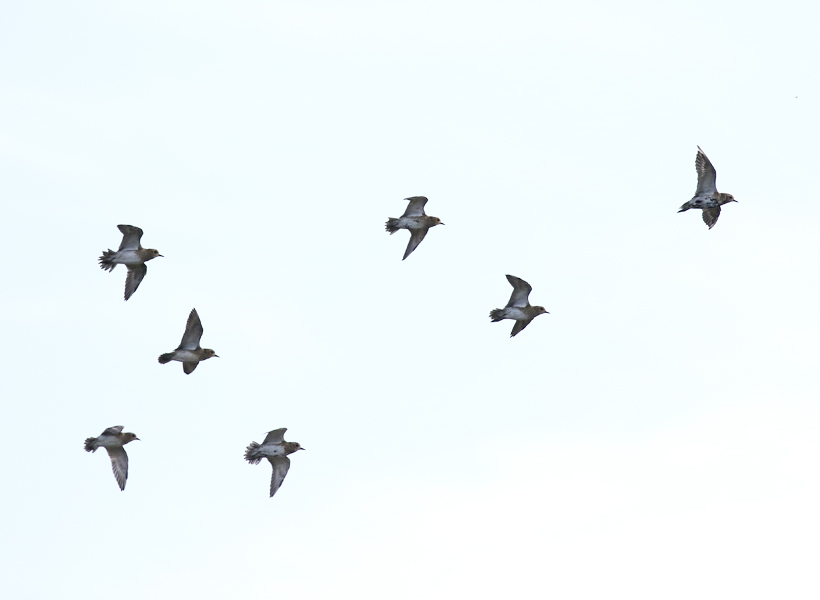
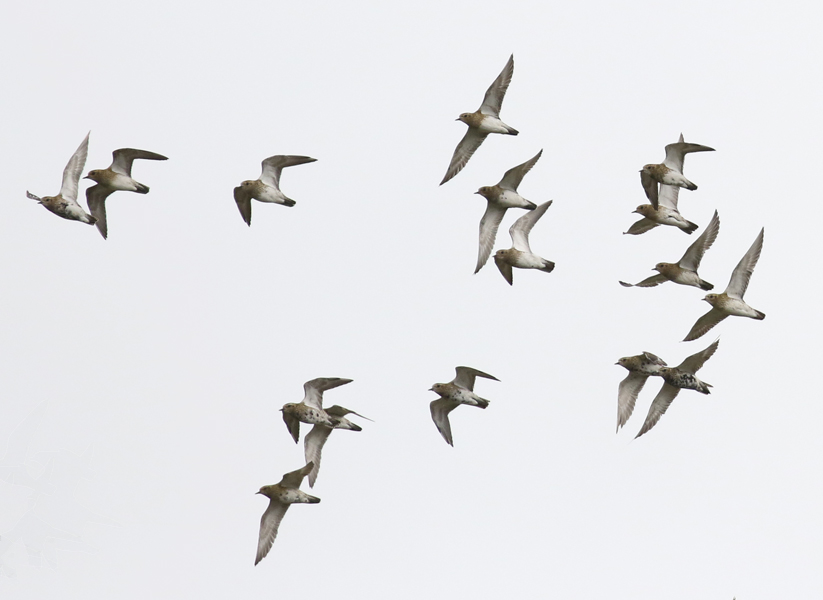
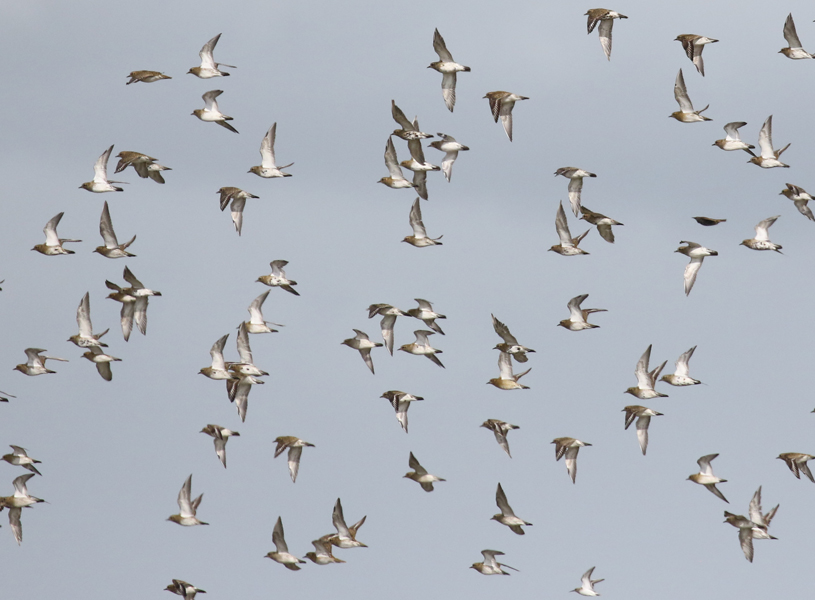

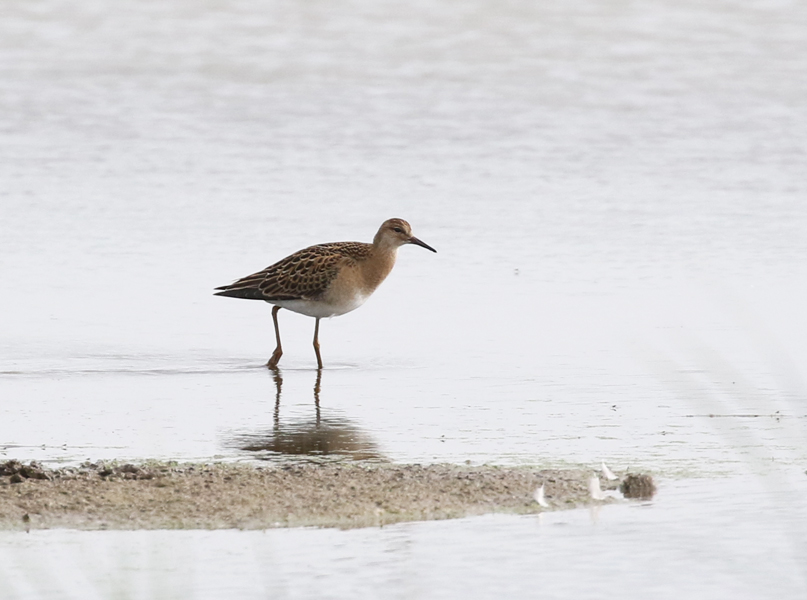
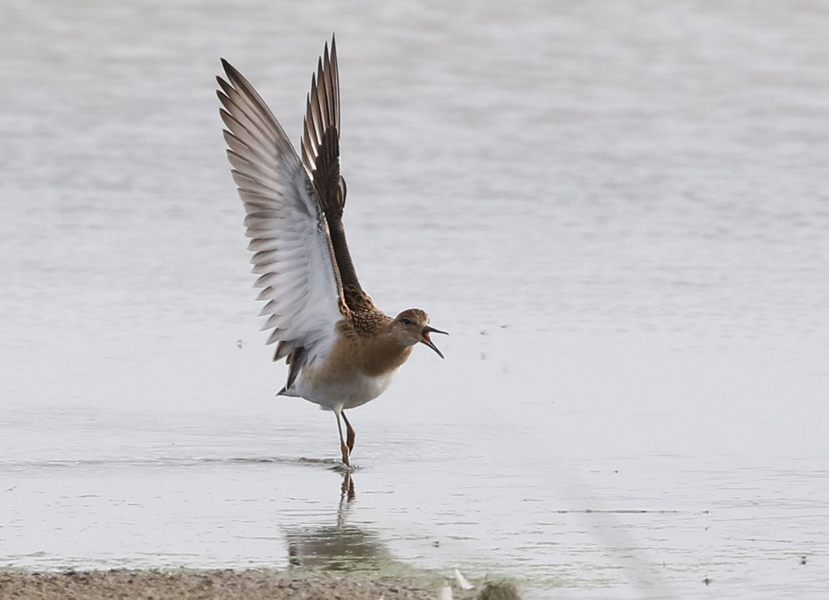

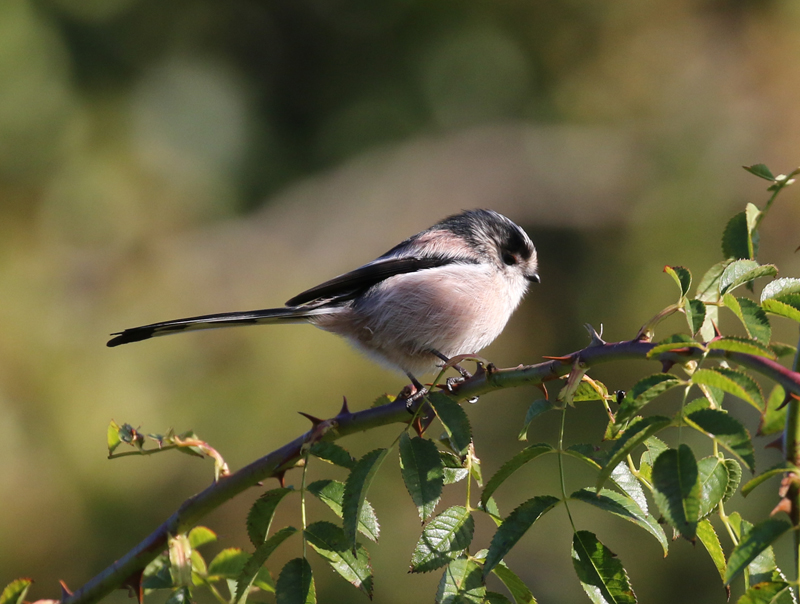


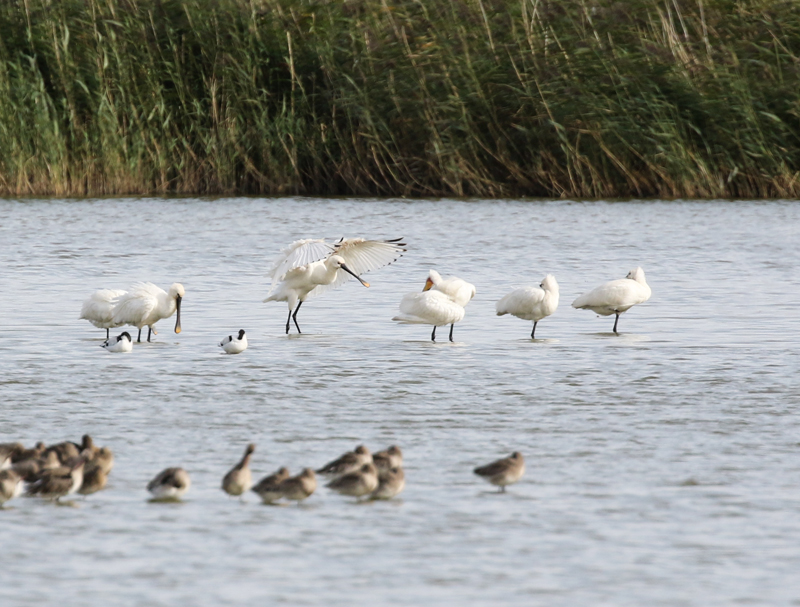
 Posted in
Posted in  Tags:
Tags: 









